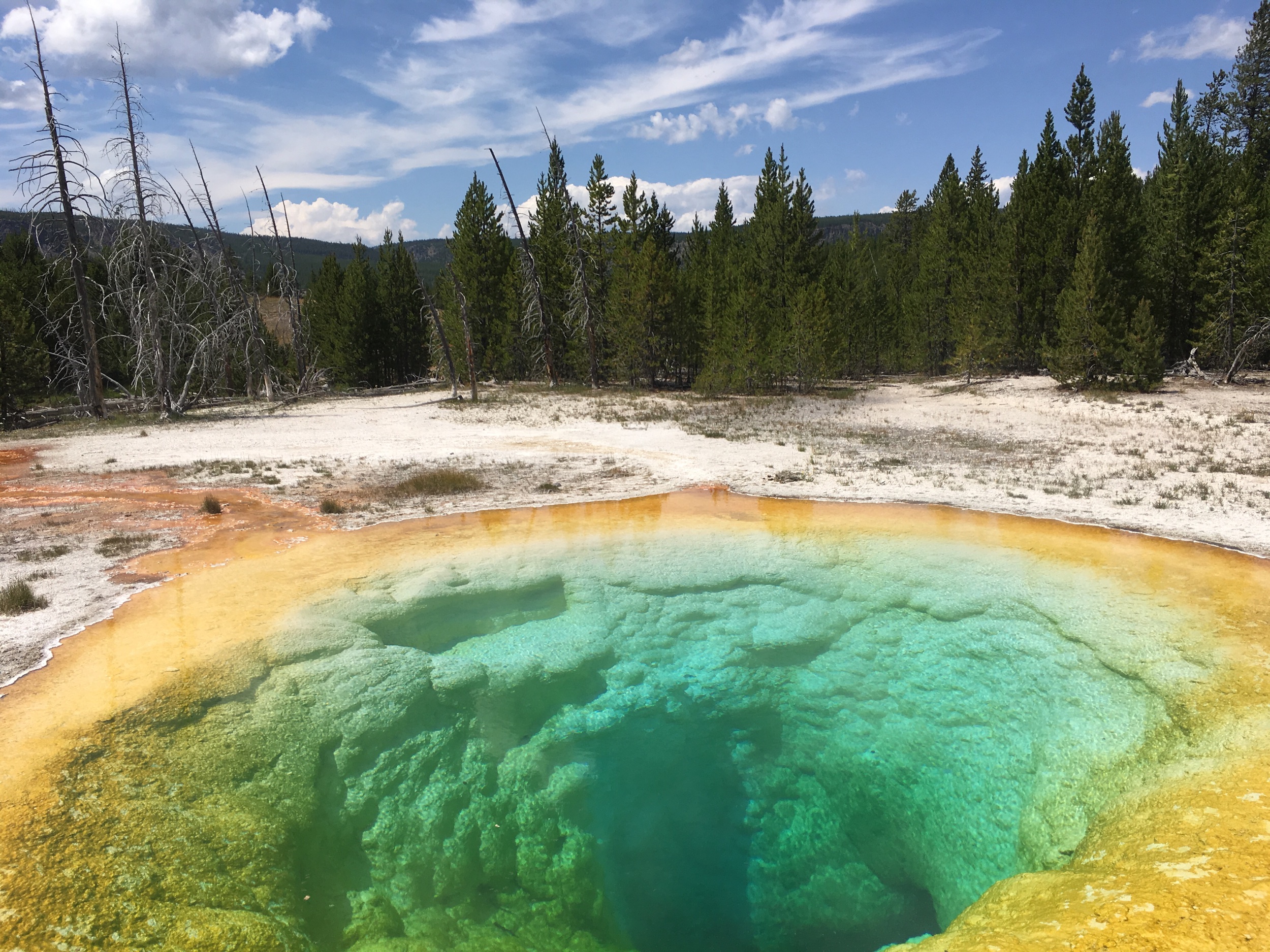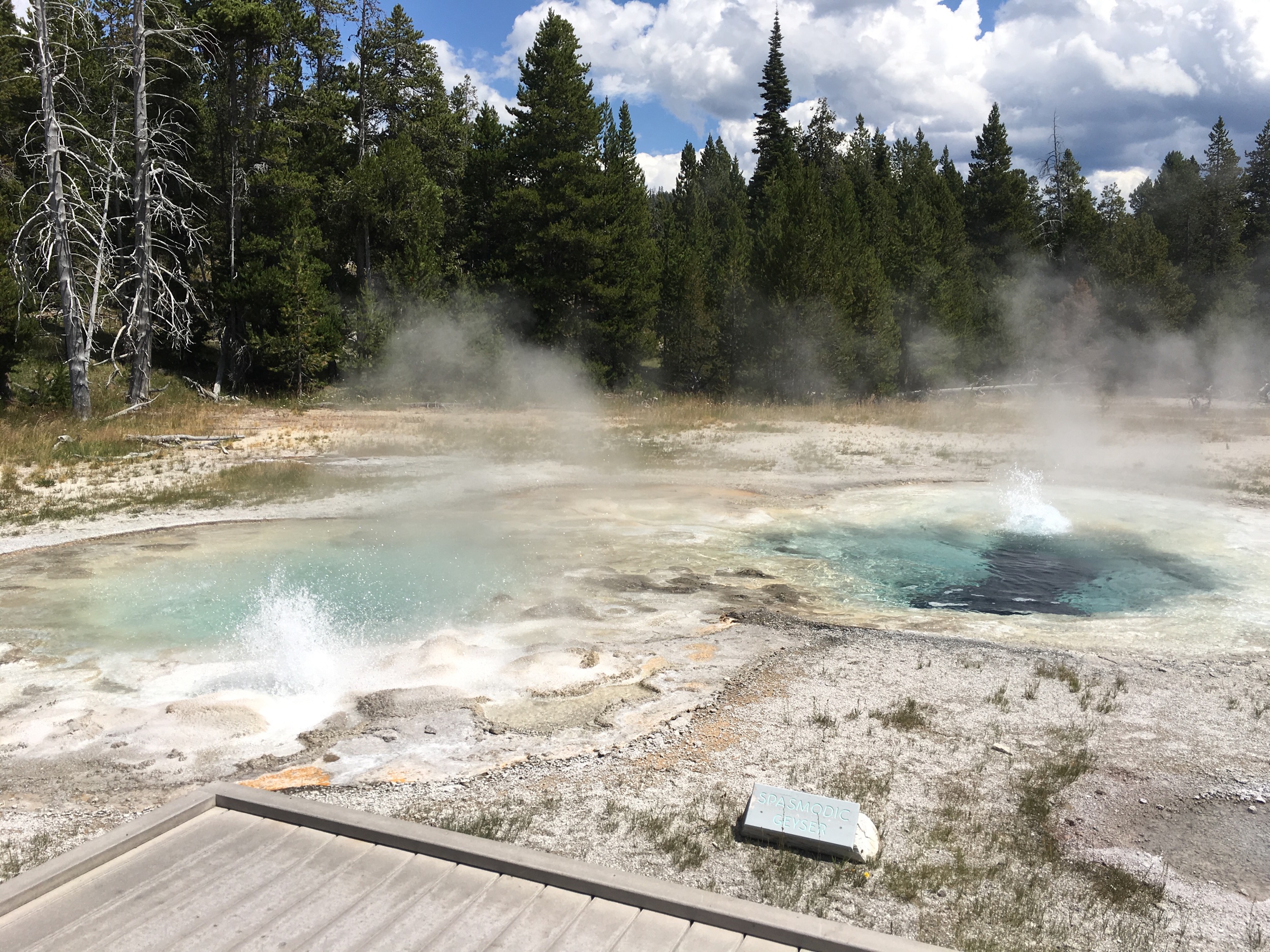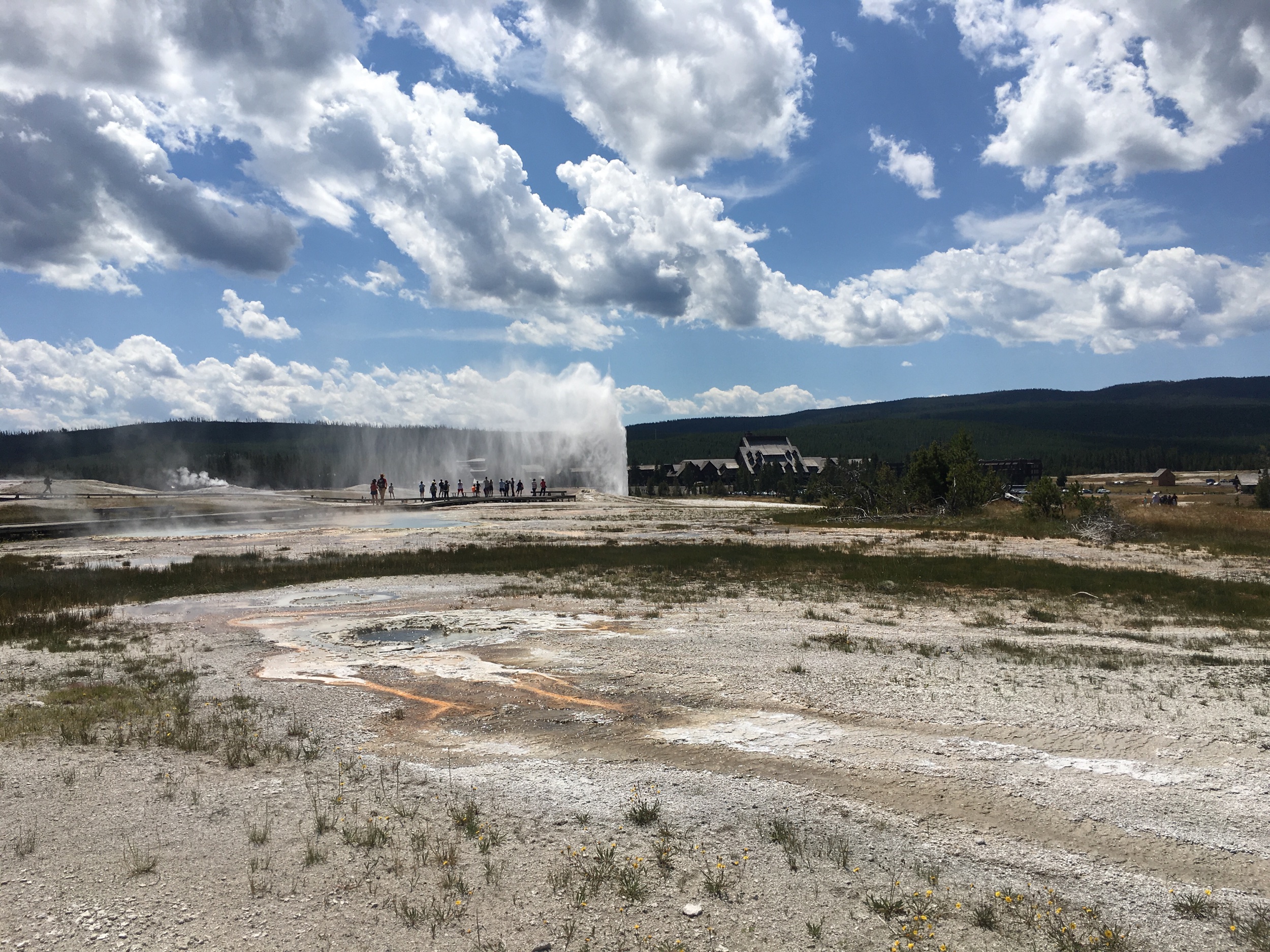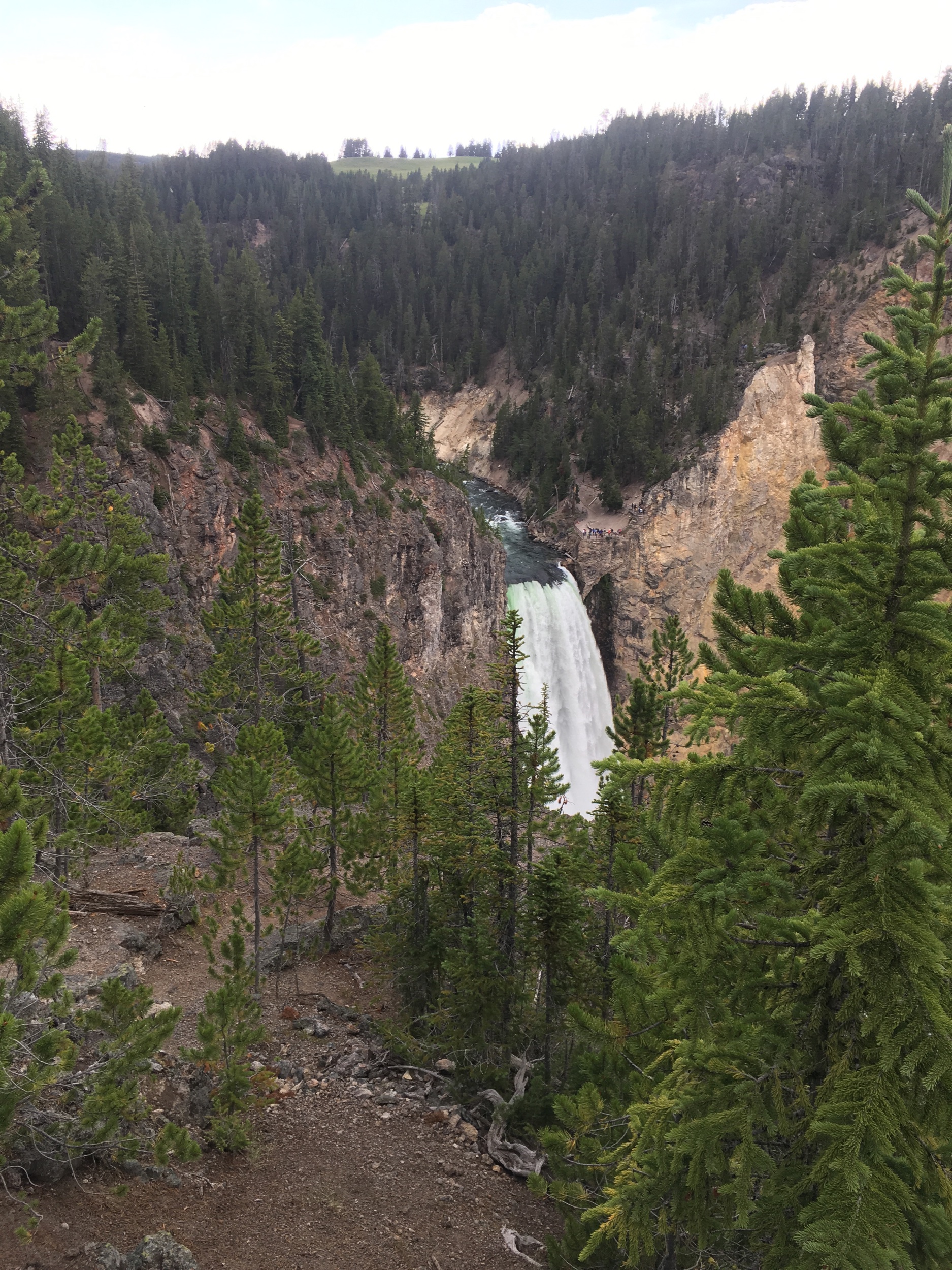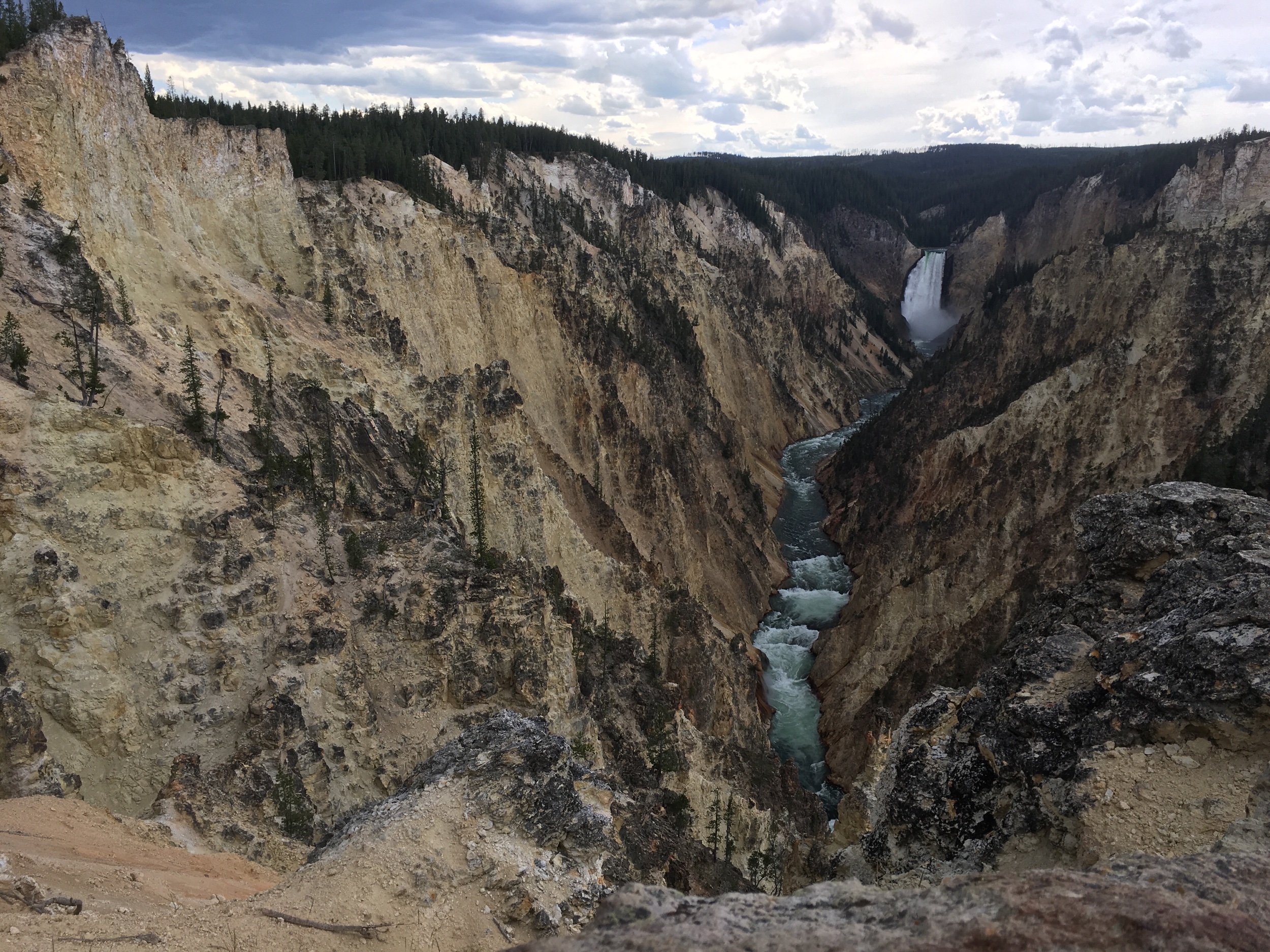Stop #8: Yellowstone National Park
Once again, Jess and I woke up early to get a campsite, but this time at Yellowstone National Park. Luckily, it was only an hour drive to the closest campsite in the park. We drove to Lewis Lake campground where they have several first-come, first-serve sites. We were able to get a site just as a couple was leaving.
After setting up our tent, we drove to what Yellowstone is most famous for, Old Faithful Geyser. This area is like Disneyland where there is a boardwalk built around Old Faithful and the area includes a visitor center, the historic Old Faithful Inn, a snow lodge, grocery store, gas station, restaurants, etc.
We first went to the Visitor Center where we saw a neat 15 minute video about Yellowstone Park. Other than Old Faithful, I didn’t know much about the area. We learned that Yellowstone is a giant caldera, basically a giant volcano. It spans a large portion of the park and is why there are many geysers, springs, mud pots, fumaroles, etc in the park.
We watched Old Faithful erupt, (it currently erupts about every 94 minutes +/- 10 minutes). Nearby, the Old Faithful Inn had free, 45 minute tours of the building. The interior architecture of the building is amazing; with a lofted ceiling spanning 7 stories and completely made from logs! It was built from lodgepole pine and Rhyolite stone sourced from the park itself. It was built over one winter and opened in 1904, which is a huge feat in itself. We even got to see one of the rooms. The Inn has a great second floor balcony where you can watch Old Faithful erupt; instead of packing it in with the crowds on the boardwalk.
Afterwards, Jess and I walked through the area, checking out the different geysers, springs and views of the Old Faithful area. It was a crowded space but still fascinating to see all of the different geysers and other formations in the area.
The next day, we decided to check out a totally different part of the park. We wanted to see the Grand Canyon of Yellowstone, as it’s called. To get there we had to drive through Hayden Valley. Here there was a traffic jam… of Bison. Most of the traffic was people stopping in their cars, to take photos of the Bison, but occasionally they would cross the road. Although it was neat to see the Bison, it was mostly a head-shaking experience as people drove while taking photos, or got out of their cars to get closer and take more photos. Sadly, humans seemed the least smart of all the animals in the park. Lots of evidence here and here.
We finally made it past the Bison gawking and to a parking lot for the start of our hike. It started in a small prairie, visited some steaming fumaroles and ended at the Grand Canyon of Yellowstone. The vastness is hard to see in the photo but it was almost like I got vertigo looking at it. It looks like someone painted it with a giant paintbrush warm watercolor tones. The river below was moving fast. There also two waterfalls.
That evening, we stopped by the Fishing Bridge Museum, located at the the northern end of Yellowstone Lake. Inside, they have multiple kinds of stuffed birds and fish of the region. One of rangers told us a family found an arrowhead just earlier on the shore of the lake! (Side note: it’s illegal to take anything from a National Park. The family had give the arrowhead to the rangers.)
There was a ranger led guide along the lake that we decided to join. The ranger explained how the lake was formed and that someone had maybe purposefully added in lake trout to Yellowstone Lake. It turns out that they are invasive and eat the only trout species in the lake, Cutthroat Trout. Since the Lake Trout dwell deep in the lake, they are eaten less by bears. They are trying to get rid of the Lake Trout by catching them in big nets, killing them and then dumping them back in the lake to return the nutrients to the lake.
We walked along the shore of the lake and found different types of animal poop! Ok, it’s called scat but poop works too. We saw Elk, Bison, and presumed Coyote scat. Elk scat looks like large Cocoa Pebbles, Bison scat is large, flat and plate sized. Coyote scat looked similar to dog poop but filled with hair. We looked at the different types of trees in the area. Lodgepole pine makes up the majority of the trees in Yellowstone because they do well in the poor soils of the area.
It has been an action packed two days in Yellowstone. It’s a large park worth exploring, but crowds and traffic during the summer can be frustrating. I think the important things to remember are to respect the animals and their environment, give them space and leave no trace.


